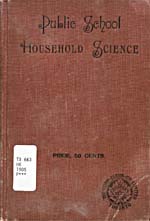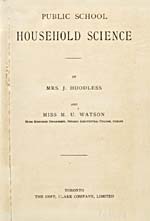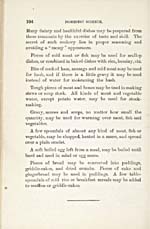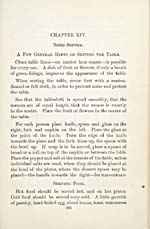|
Adelaide Hoodless (née Hunter), born in Canada East in 1857, became one of Canada's most significant 19th-century social reformers. She was involved in the establishment and early days of the Women's Institute, the National Council of Women, the Young Women's Christian Association (YWCA), and the Victorian Order of Nurses.
In 1889, the youngest of her four children, John Harold, died at the age of two. Adelaide was devastated to learn that his death was the result of drinking contaminated milk -- a common enough occurrence in those days. Milk was delivered door-to-door in uncovered containers at the time, and most people were still unaware of the basic rules of hygiene.
Determined that this would not happen to others, Adelaide Hoodless led a campaign for the pasteurization of milk. For the rest of her life, her spare time was devoted to improving life for women and families. She even persuaded the Hamilton school board to add "domestic science" to the curriculum, an idea that would spread throughout the country. In 1906, Lillian Massey Treble founded a household sciences faculty at the University of Toronto. It was one of the few university courses where female students were encouraged and where they could study chemistry.
Adelaide Hoodless died suddenly in 1910. "Apart from my family duties," she wrote, "the education of mothers has been my life work."
|
 Source
Source
|
|
|
Cheryl MacDonald. Adelaide Hoodless: Domestic Crusader. Toronto: Dundurn Press, 1986
|
|
 Source
Source
|
|
 Source
Source
|
|
 Source
Source
|
|
 Source
Source
|
|
Mrs. J. Hoodless and M.U. Watson. Public School Household Science. Rev. ed. Toronto: Copp, Clark, [1905]
|
The purpose of this little book was to encourage young Canadian girls in the art of home-making and to bridge the gap between home and school through practical home economics education.
|
 Source
Source
|
|
 Source
Source
|
|
Ruth Howes. Adelaide Hoodless: Woman with a Vision. [Ottawa]: Federated Women's Institute of Canada, 1965
|
"She was asked to prepare a text book in Domestic Science and the book was published in 1898. This 'little red book', as it was called, was far ahead of its time, with calorie charts, chemical analysis and the importance of meat, fruit, and fresh vegetables in the diet" (p. 10).
|